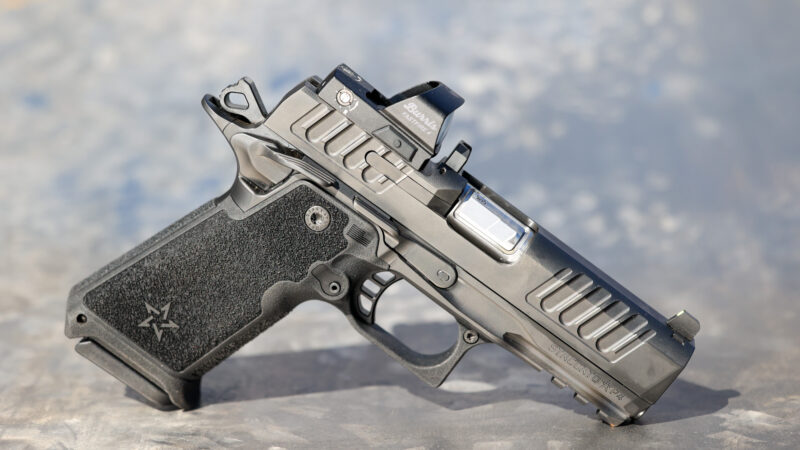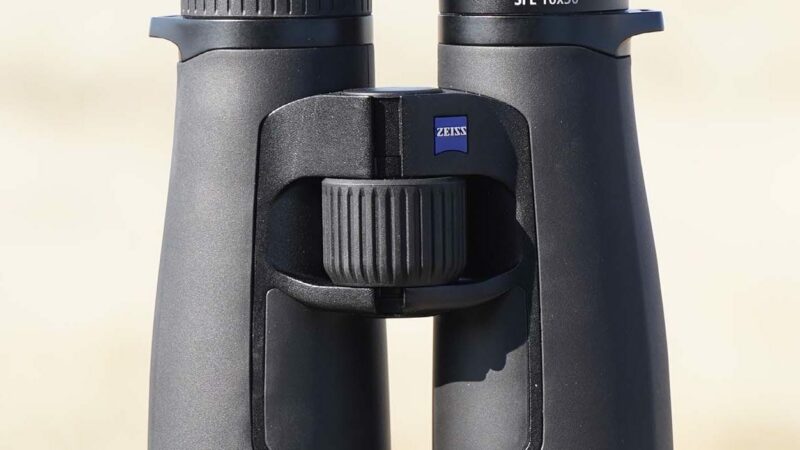Springfield 1911 DS Prodigy 3.5-inch Compact, Tested and Reviewed
We may earn revenue from the products available on this page and participate in affiliate programs. Learn More ›
The Springfield Armory 1911 DS Prodigy Compact is the latest in their line of popular polymer-grip double-stack 9mm 1911 pistols. Springfield was one of the first to mass produce a sub-$2,000 2011-style pistol, and the original Prodigy was wildly successful. This new compact model is sized for concealed carry, but still offers the features that give the platform its mass appeal. It’s got full-sized controls, comes optic ready, and is the most potentially versatile Prodigy pistol yet. If you’re looking for an entry-level 2011-style pistol that can double as an EDC carry gun, then the Springfield 1911 DS Prodigy Compact is worth considering.
Springfield 1911 DS Prodigy 3.5-inch Compact Specs
- Caliber: 9mm
- Capacity: 15+1
- Action: Single-action, hammer-fired
- Barrel: 3.5-inch, bull profile, stainless steel
- Dimensions: inches 7 inches (L) x 5.1 inches (H) x 1.28 inches (W)
- Weight: 28.9 ounces (with empty 15-round magazine and no optic) (measured)
- Frame: 7075 T-6 Aluminum
- Slide: Carbon steel, forged
- Optics: Cut for optic, uses Agency Optics System (AOS) plates
- Controls: Right-handed slide stop, mag catch, ambidextrous safety levers
- Finish: Black Cerakote
- Grip: Polymer grip module, fine stipple texture
- Sights: Tall, tritium/white-dot front, serrated black “U-notch” rear (drift adjustable
- Trigger: Aluminum, single-action, curved shoe, 4 pounds, 12 ounces (measured)
- MSRP: $1,549
Key Features
- Compact length 3.5-inch bull barrel
- Shortened grip module designed for 15-round magazines
- AOS adapter plates allow use of a variety of red dot optics
- Iron sights will co-witness through most optics
- Accuracy: 1.55 inches (average of six five-shot groups from 15 yards)
Review Highlights
- Smooth and reliable
- Accurate
- Solid option for concealed carry
- Thumb safety fit is tighter with less play than early generation Prodigy pistols
- Good value for a 2011-style pistol
- Some sharp edges on the grip
The Springfield 1911 DS Prodigy Compact: A More Versatile Prodigy
The new Springfield 1911 DS Prodigy Compact is the most significant update the line has seen since its introduction back in 2022. Initially, the Prodigy was introduced in 4.25- and 5-inch versions and early testers encountered some magazine and feeding issues. That was all resolved by the time I got my first sample, which I proved by firing more than 1,000 rounds. It was reliable and accurate. So was the compensated variant, the Prodigy Comp, that we featured in our gun test in 2024.
Previous 1911 DS Prodigy models were all full-sized pistols that were great for competition, a bedside handgun, or for the entry-level 2011 enthusiast, but they are too large to be good concealed-carry guns. The new 3.5-inch-barreled Prodigy Compact offers most of the perks of the full-sized versions, but in a size that is much more versatile. Its overall length is reduced by nearly an inch, and the grip is half an inch shorter.
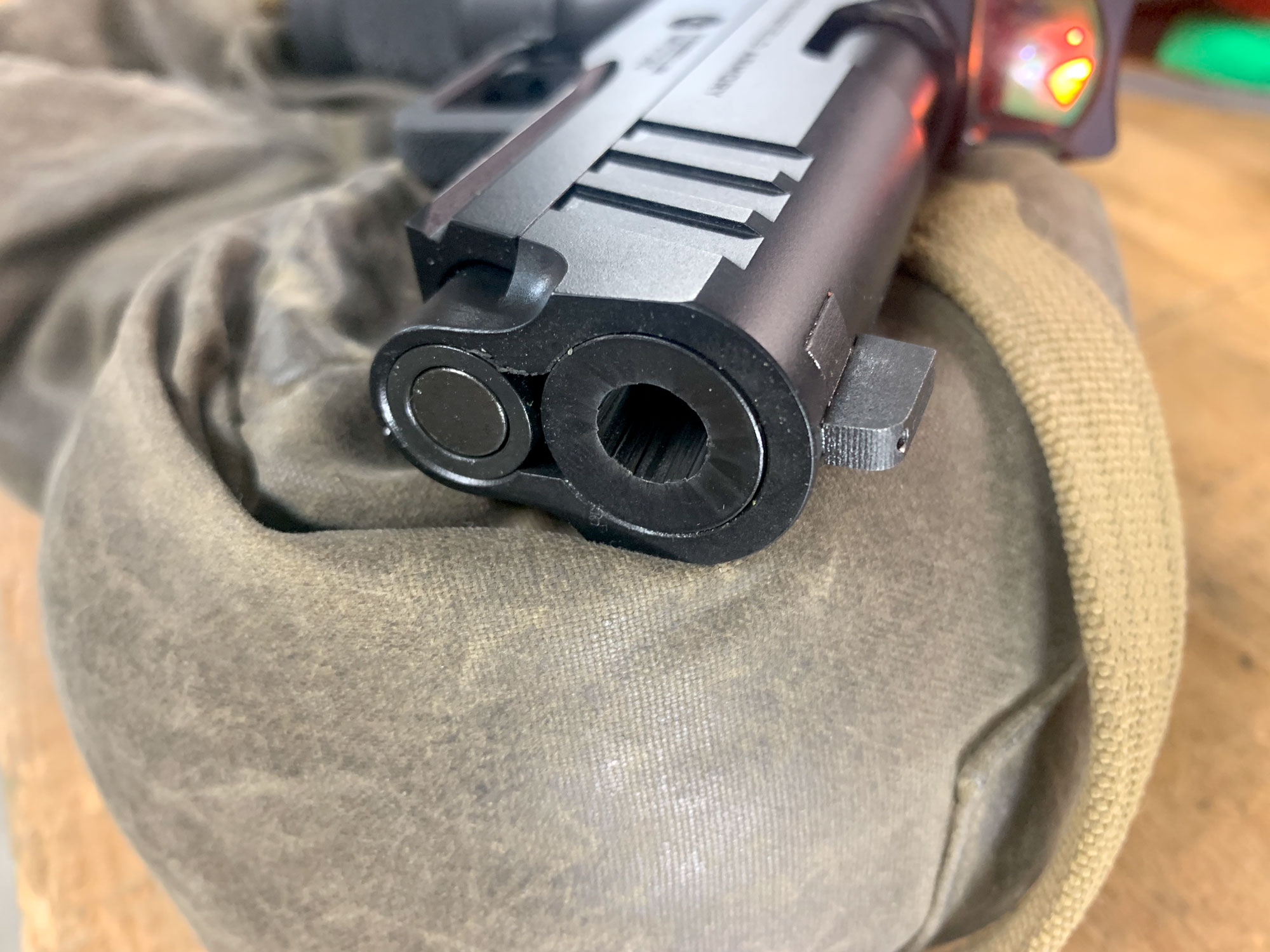
1911 DS Prodigy Primer
The whole of the Springfield Prodigy series shares many of the same design features. For a deeper dive on those, check out my review of the original 1911 DS Prodigy. Like other models, the Springfield Prodigy Compact is commonly referred to as a 2011-style pistol. The term “2011” is trademarked by Staccato 2011, formerly STI, which specializes in double-stack 1911s like the Staccato P. There have been double-stack 1911 pistols for decades, so what’s new? Mainly, 2011-style pistols are unique in that they feature a polymer grip module that attaches to a shortened frame. Traditional 1911s usually have a solid frame that extends down to the bottom of the grip, to which grip scales are attached.
Read Next: Best 2011 Pistols
The Prodigy generally resembles the Staccato P. It sports similar features such as ambidextrous safety levers, a beavertail grip safety, skeletonized hammer, and optic mounting systems, but it’s not as refined and costs about a thousand dollars less. As an entry-level 2011-style pistol, the Prodigy is a good buy, delivering smooth, easy-to-shoot performance that has caught on with many shooters.
The New 1911 DS Prodigy 3.5-inch Compact: What’s New
The Springfield 1911 DS Prodigy Compact has two obvious new features — a shorter barrel and grip module — and others that are more subtle. The cut-down dimensions help the pistol achieve its compact status. The polymer grip module was shortened, and the 3.5-inch bull barrel results in an overall length more similar to standard compact handguns like the Glock G19. It’s the same overall length, but the grip is about half an inch longer than the G19.
The shortened grip module uses the same fine stipple texturing as the original prodigy, but this one accepts shorter 15-round magazines. It’s got plenty of real estate for establishing a proper grip. Though the grip is shorter than the original Prodigy, it has the same width and depth as the original. As with that pistol, I think these dimensions will work better for shooters with larger hands. Those with smaller mitts might find the grip a touch larger than ideal.
The pistol comes with two mags, made by Duramag, but it’s also compatible with the standard 17-round and larger Duramag magazines, as well as Staccato brand 2011 magazines. Magazines are are bottlenecked at the top to transition from double to single stack, just like the higher capacity ones.
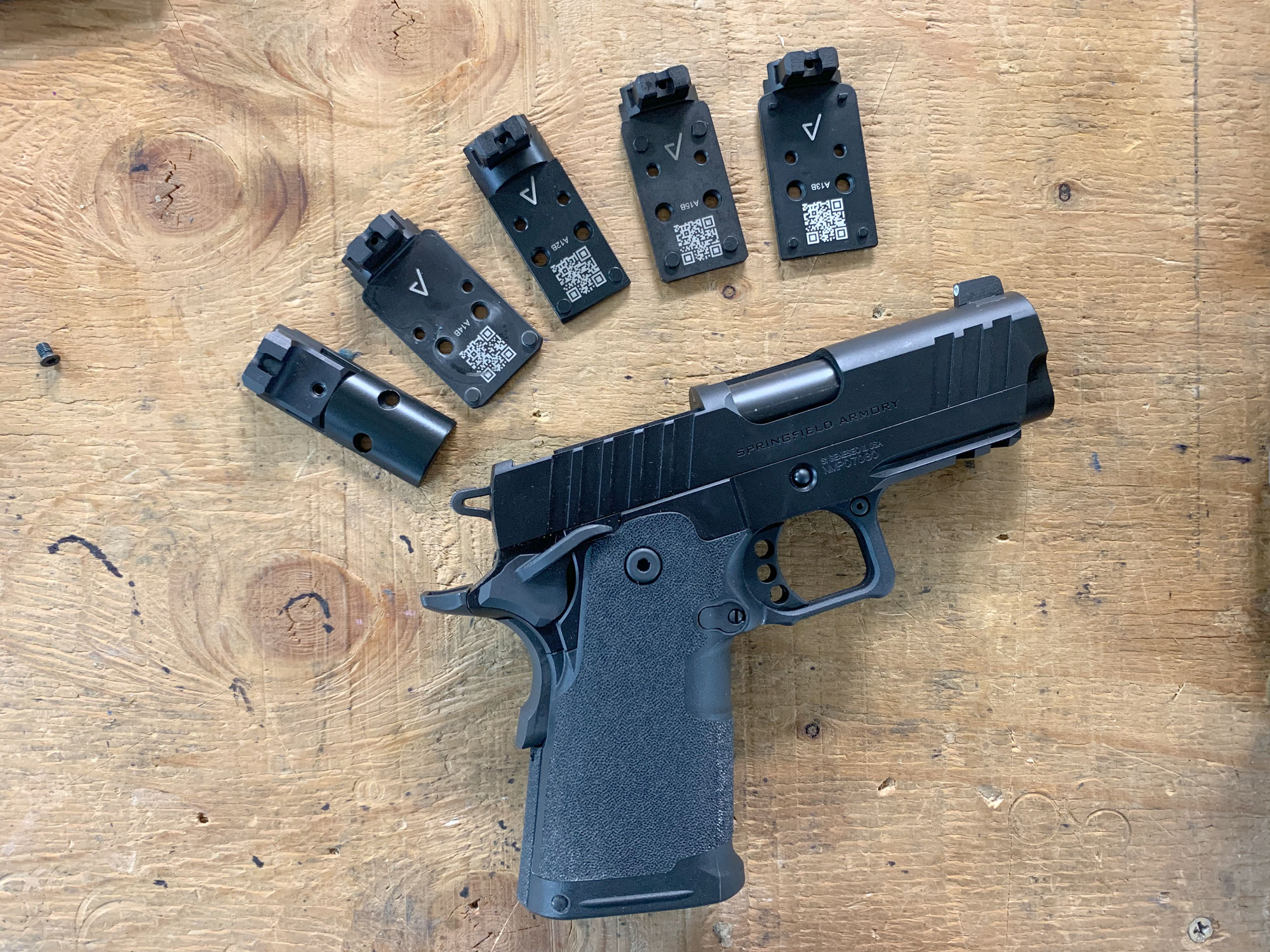
Sights
The sights on the Prodigy Compact look very similar to those on other models, but where previous Prodigy pistols have featured fiber-optic front sights, this one has a white-dot tritium night front post.. This model comes with a contoured cover plate that includes a serrated black U-notch rear, but uses interchangeable AOS plates which accept a variety of red dot optics, including Shield, Delta Point, RMR, Holosun, Vortex, and others. Each optic plate has a built-in rear sight similar to what comes on the gun. Like other Prodigy models, sights are tall enough to co-witness with a red dot.
Frame and Beavertail
A key difference between this and previous Prodigy models is that the frame of the compact model is billet 7075-T6 anodized aluminum rather than Cerakoted carbon steel, which is a typical way to take weight out of a pistol. Guns like the Staccato P are available in either aluminum or steel, and the compact Staccato CS both have aluminum frames. The slide is still forged carbon steel, and the slide to frame fit is wonderfully tight with hardly any perceivable play or slop.
The dust cover on the Prodigy compact is slightly shorter than other models, the front is beveled to match the machined contour of the slide assembly, and it features a two-slot rail, while other models have either one- or five-slot rails. At the rear, the beavertail is slightly bobbed and squared off to reduce overall length, and the hammer is a bit more compact than on previous prodigy models. It still provides plenty of surface area on the spur for manipulation, but the reduced size is likely necessary to fit into the groove on the shortened beavertail in the cocked position.
I noticed that the ambidextrous safety levers have been dramatically improved over the original Prodigy. Where they used to be loose and mushy in the fire position, they are tight, rigid, and well-fit. There is a lot of real estate on the thumb pads of the safety levers, and it’s easy to manipulate them both right- and left-handed. The safety lever would pinch the web of my hand when I disengaged it if I was holding it with a loose grip, but it never bothered my right. It wasn’t an issue when holding the grip tightly.
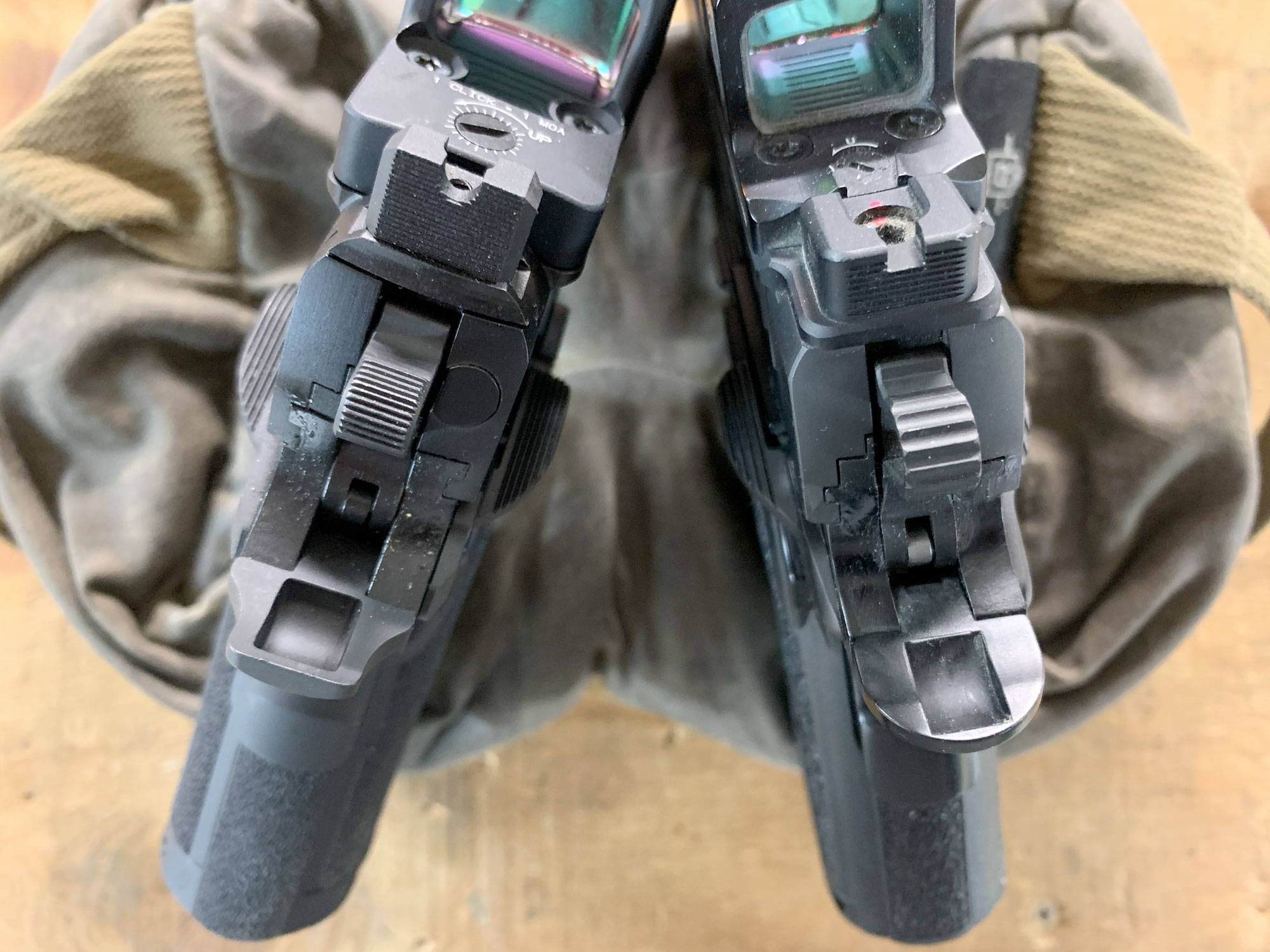
Recoil System
The recoil system of the Springfield Prodigy Compact has been updated too. It uses a dual guide-rod design with the inner guide rod being full-length. The original Prodigy employed a single full-length two-piece guide rod. That one had to be disassembled to remove it from the slide assembly. This one can be removed and installed without doing that. It resembles the Dawson Precision dual recoil spring system on the Staccato CS, but is a bit less refined and user friendly. This guide rod is tricky to remove and install the first few times. It requires you to pull the outer guide rod sleeve to the rear, compressing the spring so it can rotate into place. It functions well though, and the Prodigy Compact has a quick, smooth recoil cycle.
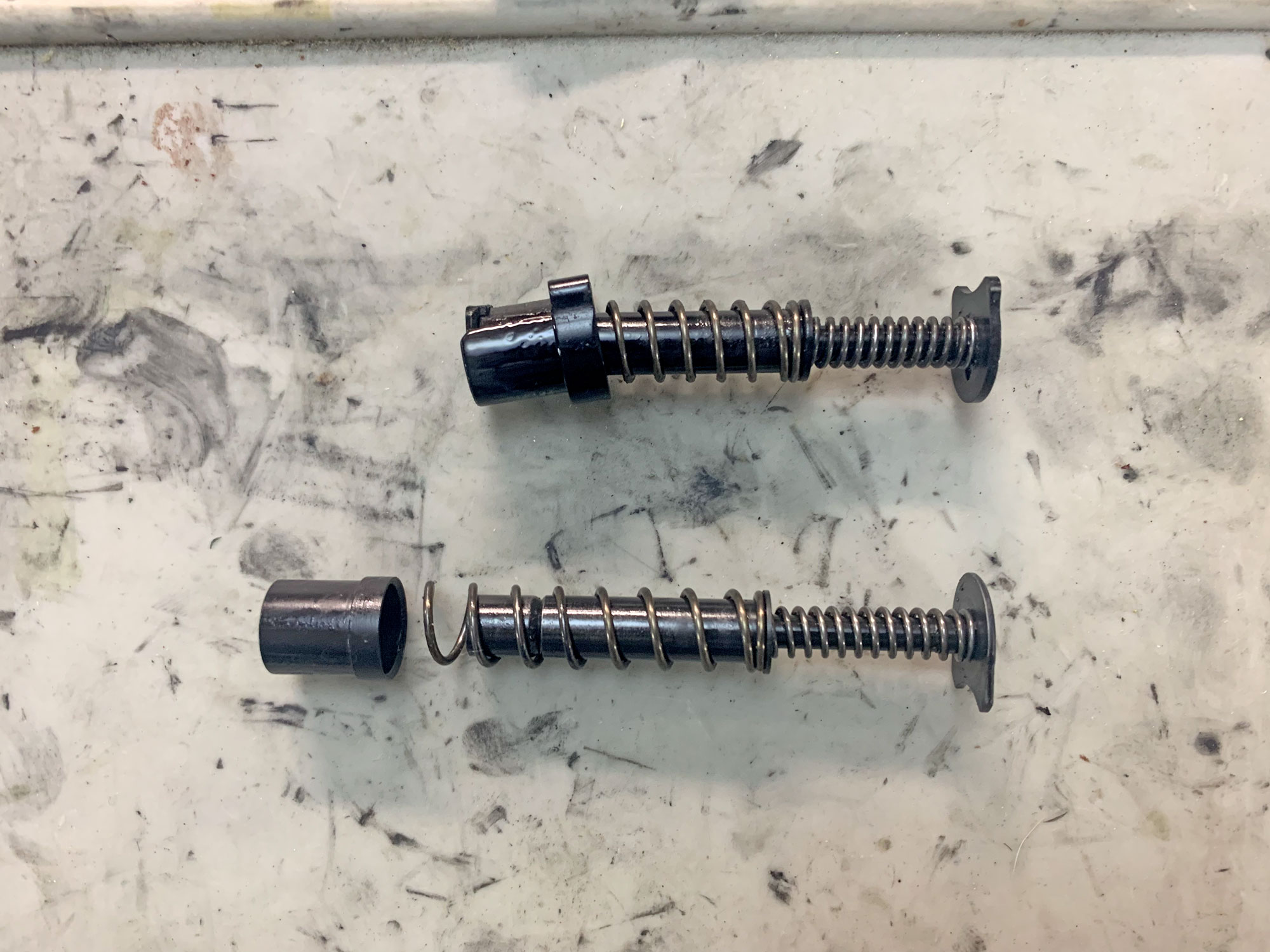
Shooting the Springfield Prodigy Compact
The Springfield Prodigy Compact is a pleasant and fun pistol to shoot — remarkably different from your average striker-fired pistol. It’s got a good trigger — just under five pounds — that isn’t too heavy. It has a bit of takeup with a crisp break and little overtravel. The reset is a bit soft, meaning the trigger doesn’t snap back robustly with a distinct click when you release it, and it’s hard to shoot with the blistering speed of a finely-tuned 1911 like a Nighthawk Custom Firehawk. I shot the pistol quickly and with good accuracy, but regularly got tripped up by the trigger when trying to go really fast in a Bill Drill.
Through testing, I put more than 500 rounds through the Prodigy Compact while testing, and didn’t have a single malfunction. I used both ball and jacketed hollow point defensive ammo, and everything cycled, fired, and ejected perfectly.
I topped the Prodigy Compact with a Trijicon RMR and alternated shooting with my Staccato CS, using it as a point of reference. The CS is a more expensive 2011 pistol with a more modern magazine design that holds 15 rounds too. The Prodigy was understandably not quite as nimble and refined as the CS and, like previous Prodigy models, the back edges of the safety levers are a bit sharp on the web of the hand. Compared to the lower-priced 2011-style pistols like the Turkish MAC 9 DS, The compact Prodigy is a step up.
For accuracy, I tested the 1911 DS Prodigy Compact by shooting five-shot groups from 15 yards from a bag-supported standing position. I also fired supplementary groups at 25 yards, using 136-grain Staccato Match ammo for all accuracy testing.
15-Yard Accuracy Average: 1.55 inches (six groups)
25-Yard Accuracy Average: 2.21 inches (four groups)
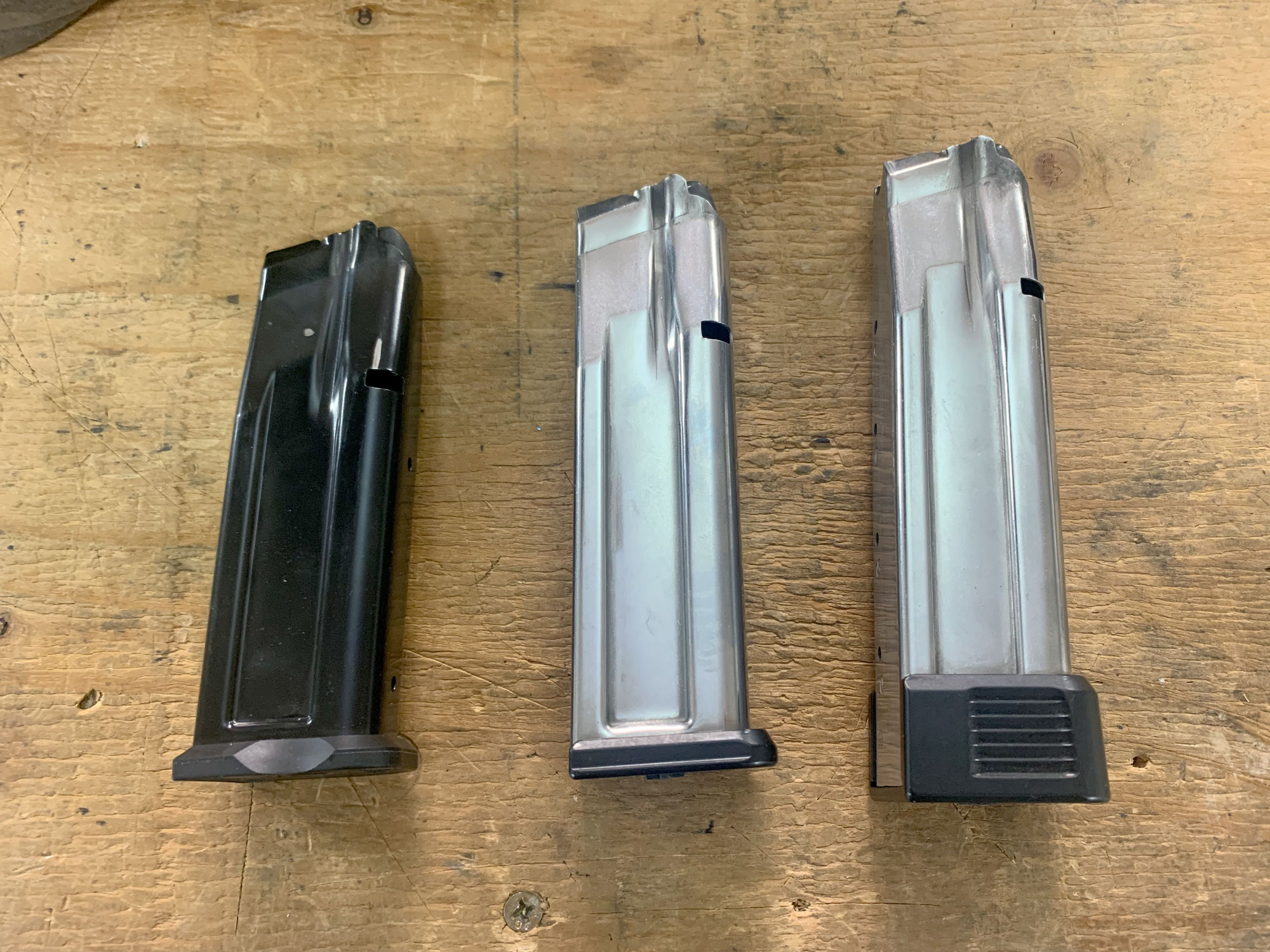
Pros and Cons
Pros
- Affordable for a 2011-style pistol
- Comes equipped for a variety of red dot optics
- Compact and suitable for concealed carry
- Works for competition
- Accurate and easy to shoot well
Cons
- Grip is a little large for shooters with small hands, even though it’s a compact pistol
- Not as refined as some more expensive 2011-style guns.
Final Thoughts
The Springfield 1911 DS Prodigy Compact is a good addition to the lineup. For the shooter who is interested in 2011-style pistols, but wants something that’s realistic to carry, this is the best one currently on the market. It’s smooth, reliable, and accurate enough for practical shooting competition, but versatile enough to be your all-around general use pistol. At around $1,500, the Prodigy Compact is a good value and a great entry point to the world of high performance double-stack 1911s.
The post Springfield 1911 DS Prodigy 3.5-inch Compact, Tested and Reviewed appeared first on Outdoor Life.
Source: https://www.outdoorlife.com/guns/springfield-prodigy-compact-review/


